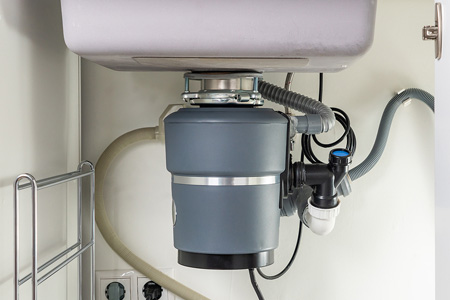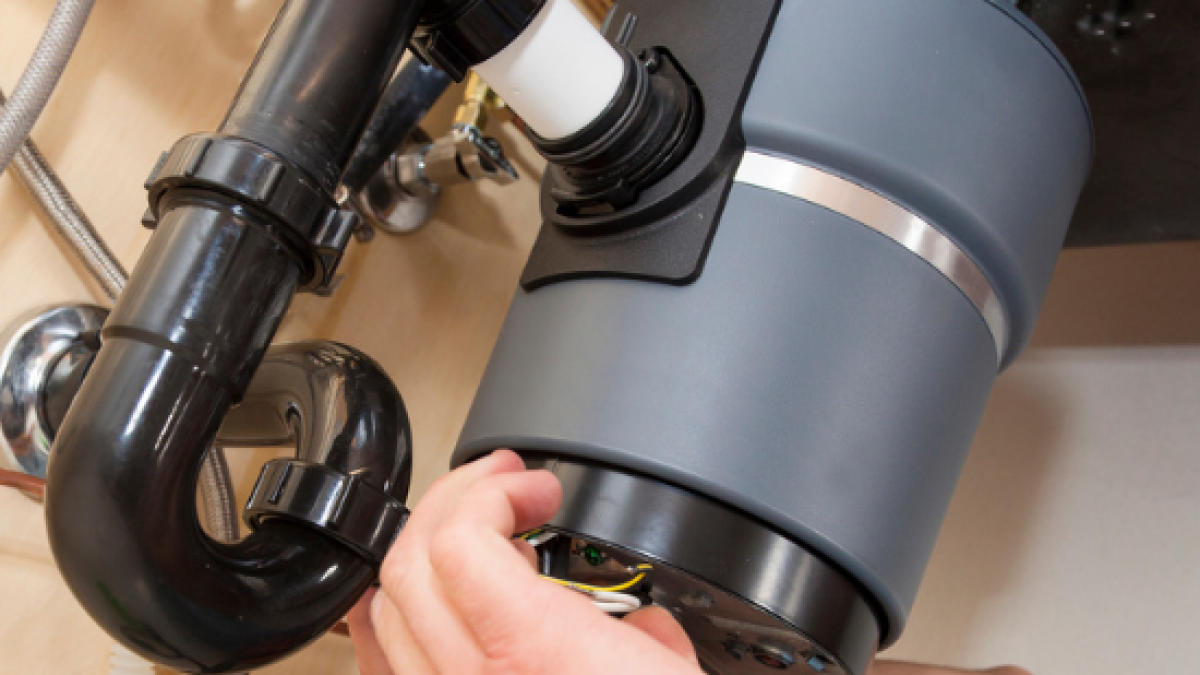What are your ideas about Why Is ?

Waste disposal unit are crucial kitchen devices that aid in disposing of food waste successfully. Nonetheless, a leaking garbage disposal can be a frustrating and unpleasant problem to manage. Luckily, numerous leakages can be taken care of easily with a couple of easy actions. In this post, we will discuss just how to repair a dripping garbage disposal successfully.
Introduction
Garbage disposals are mounted under kitchen sinks and are created to shred food waste into smaller sized items, allowing it to go through the pipes system quickly. While these gadgets are normally trusted, leaks can happen over time because of wear and tear, loosened links, or damage to the unit.
Usual Causes of Leaks in Garbage Disposals
Worn Seals and Gaskets
Seals and gaskets play an important duty in avoiding water from dripping out of the garbage disposal. Gradually, these parts can degrade, leading to leaks around the disposal device.
Loose Links
The connections in between the waste disposal unit and the plumbing system can become loose in time, triggering water to leakage out throughout procedure.
Splits or Openings in the Disposal Device
Physical damages to the waste disposal unit, such as splits or holes in the real estate, can additionally cause leakages.
Recognizing the Resource of the Leak
Before attempting to fix a leaking garbage disposal, it is essential to recognize the resource of the leakage. This can usually be done with visual inspection or by performing basic tests.
Visual Assessment
Examine the garbage disposal device very carefully for any indicators of water leakage. Pay attention to areas around seals, gaskets, and link points.
Examining for Leakages
One method to check for leakages is by running water with the disposal system and checking for any type of visible indications of leakage.
Tools and Materials Needed for Dealing With a Leaking Garbage Disposal
Before beginning the repair procedure, collect the needed tools and materials, consisting of a screwdriver, flexible wrench, plumber's putty, substitute seals or gaskets, and epoxy or patching material for repairing splits or holes.
Step-by-Step Guide to Taking Care Of a Leaking Waste Disposal Unit
Shut off the Power
Before trying any kind of repair services, ensure that the power to the waste disposal unit unit is turned off to avoid the threat of electric shock.
Find the Leakage
Determine the precise place of the leak and establish the cause.
Tighten up Connections
Use a wrench to tighten any kind of loose connections in between the disposal unit and the plumbing system.
Change Seals or Gaskets
If the leakage is due to worn seals or gaskets, eliminate the old parts and replace them with new ones.
Patching Fractures or Openings
For cracks or holes in the disposal system, use epoxy or an appropriate patching product to secure the broken location.
Testing the Garbage Disposal After Fixing
As soon as the repair is complete, test the garbage disposal by running water through it to ensure that the leakage has actually been resolved.
Preventive Maintenance Tips to Avoid Future Leaks
To stop future leakages, it is vital to do routine maintenance on your garbage disposal. This consists of maintaining it clean, staying clear of placing non-food products or hard things down the disposal, and regularly checking for leakages or other issues.
Verdict
To conclude, repairing a dripping garbage disposal is a relatively uncomplicated process that can be finished with fundamental devices and materials. By complying with the actions outlined in this short article and exercising precautionary upkeep, you can keep your waste disposal unit in good working condition and stay clear of costly repair services in the future.
HERE’S HOW TO FIX YOUR GARBAGE DISPOSAL
WHAT TO DO IF SOMETHING IS STUCK IN YOUR GARBAGE DISPOSAL
If the impeller won’t turn, there’s probably something stuck in the disposal. It could be a steak bone or peach pit, although plumbers report pulling all sorts of inappropriate objects out of disposals, such as bottle caps or aluminum foil. Make sure power to the disposal is off, and look inside to see if you can see the source of the jam.
Never stick your fingers in a disposal. Pull out anything you see with tongs or pliers.
If the disposal still won’t work, it may be time to call a plumber or consider buying a new disposal. GEM Plumbing & Heating is here for all of your garbage disposal needs.
WHAT TO DO IF YOUR GARBAGE DISPOSAL DRAIN IS CLOGGED
Take everything out from underneath your sink and put a bucket or other container under your disposal to catch any water that drains out. Disconnect your disposal from the power supply. If it’s plugged into a wall outlet, unplug it. If it’s hardwired into an electrical box, go to the electrical panel and turn off the breaker for the disposal. Pour ¼ cup of baking soda into the drain, followed by ½ cup of white vinegar. Give the solution a few minutes to fizz and do its work. Look into the disposal with a flashlight to see if you can see an object that might be causing the clog. If you see it, remove it using tongs or pliers. MORE TIPS ON DEALING WITH A CLOGGED GARBAGE DISPOSAL
Never use drain cleaner in a garbage disposal. It can damage the plastic parts inside the disposal. You can also be splashed with the caustic liquid while working to clear the clog. Beware! Never stick your fingers into a garbage disposal. Trust us — not a good idea. In many instances, your dishwasher drains through your garbage disposal. This allows the disposal to grind any large food particles that may be drained out of your dishwasher. There are some jurisdictions, however, where the plumbing code prohibits such a connection. WHAT TO DO WHEN YOUR DISHWASHER DRAINS THROUGH THE DISPOSAL
Run some water in the sink so your plunger has at least a ½-inch of water to create a seal and plunge vigorously up and down several times. You may need to repeat this several times. Run hot water down the drain to clear any residue that remains.

We had been made aware of that article on Why Is through someone on a different website. Appreciated our blog? Please share it. Help another person check it out. I praise you for your time. Don't forget to come visit our website back soon.
Schedule Services